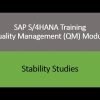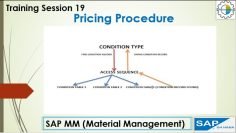This video, titled “Video 19 – SAP S/4HANA Quality Management (QM) module training – Automatic Batch Valuation with QM” by Savan Chandra, provides an in-depth understanding of Automatic Batch Valuation with Quality Management (QM) in the SAP S/4HANA system. Here are the key points:
- Automatic Batch Valuation with QM: The video explains the process of automatic batch valuation with QM. It involves linking Master Inspection Characteristics (MICs) and Class Characteristics, which allows the transfer of quality inspection results to the batch classification. This process is essential for the system to access them in batch determination.
- Master Inspection Characteristics (MICs) and Class Characteristics: The video discusses the link between MICs and Class Characteristics. In logistics modules like MM, PP, SD, they use batch classification, which utilizes Class Characteristics. In QM, MICs are used. When results for the MIC are entered in the inspection lot, the result gets updated in the batch classification on the same batch.
- Batch Classification: The video explains that batch classification is used in logistics modules. The result entered for the MIC in the inspection lot gets updated in the batch classification on the same batch. This process only takes place if the material is handled in batches and if a batch class was assigned to the material master in the classification views.
- Linking MICs and Class Characteristics: The video demonstrates how to link MICs and Class Characteristics. When the inspection lot is created, and results are entered, the value entered in the MIC gets automatically transferred to its corresponding Class Characteristic as the batch is the same.
- Creating Class Characteristics: The video shows how to create Class Characteristics in the batch classification. It explains that these characteristics are created by the logistics team based on their needs.
- Linking QM MICs and Batch Characteristics: The video demonstrates how to link QM MICs with Batch Characteristics. This linking process is crucial for the automatic transfer of inspection results to the batch classification.









































